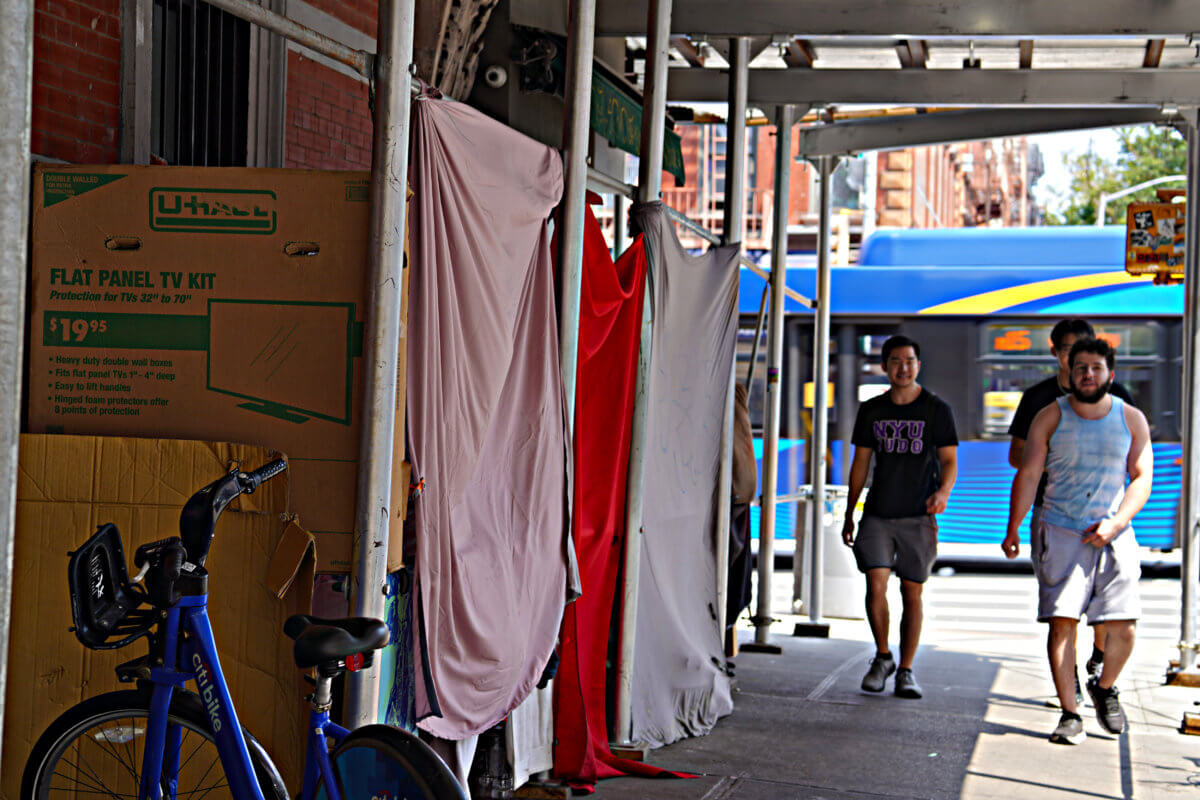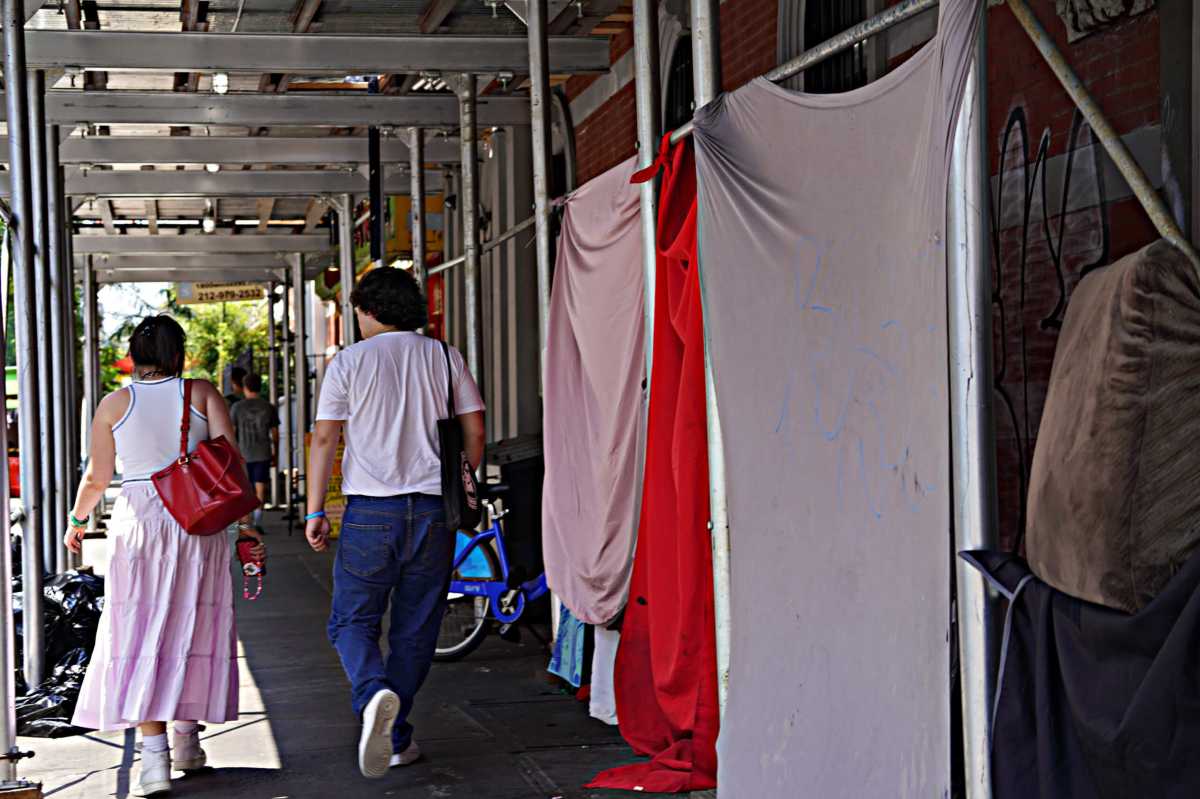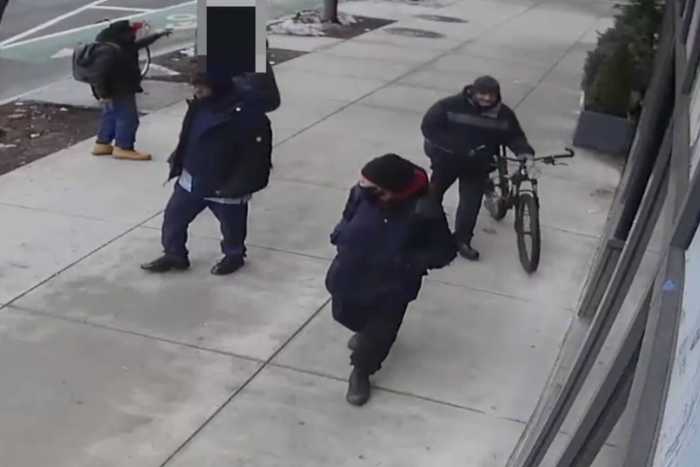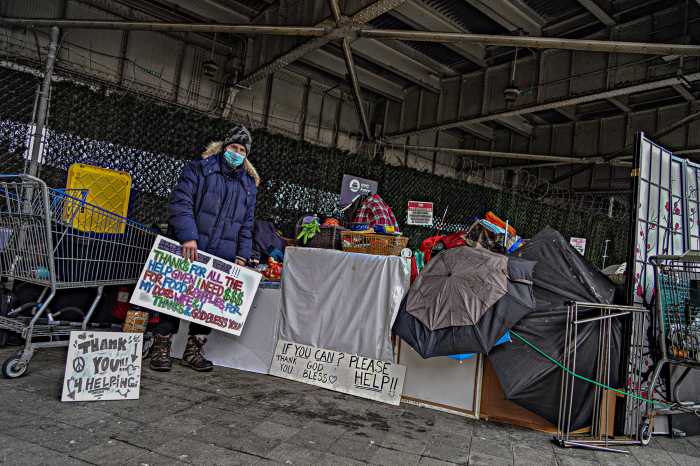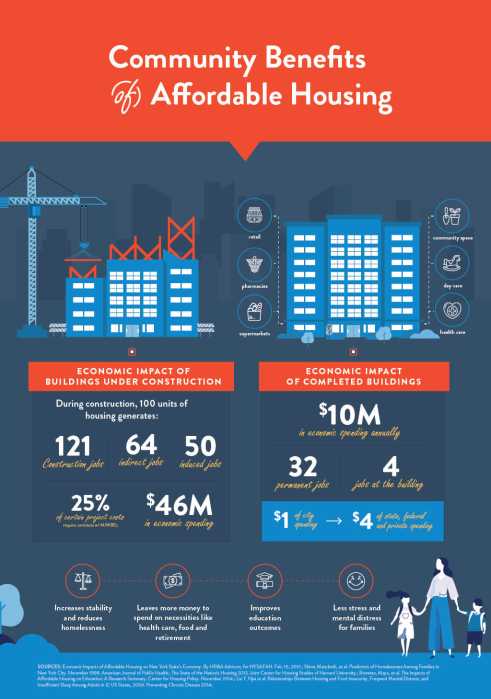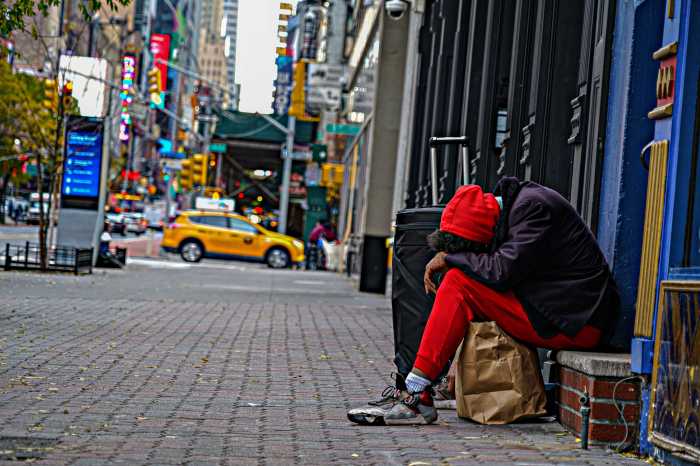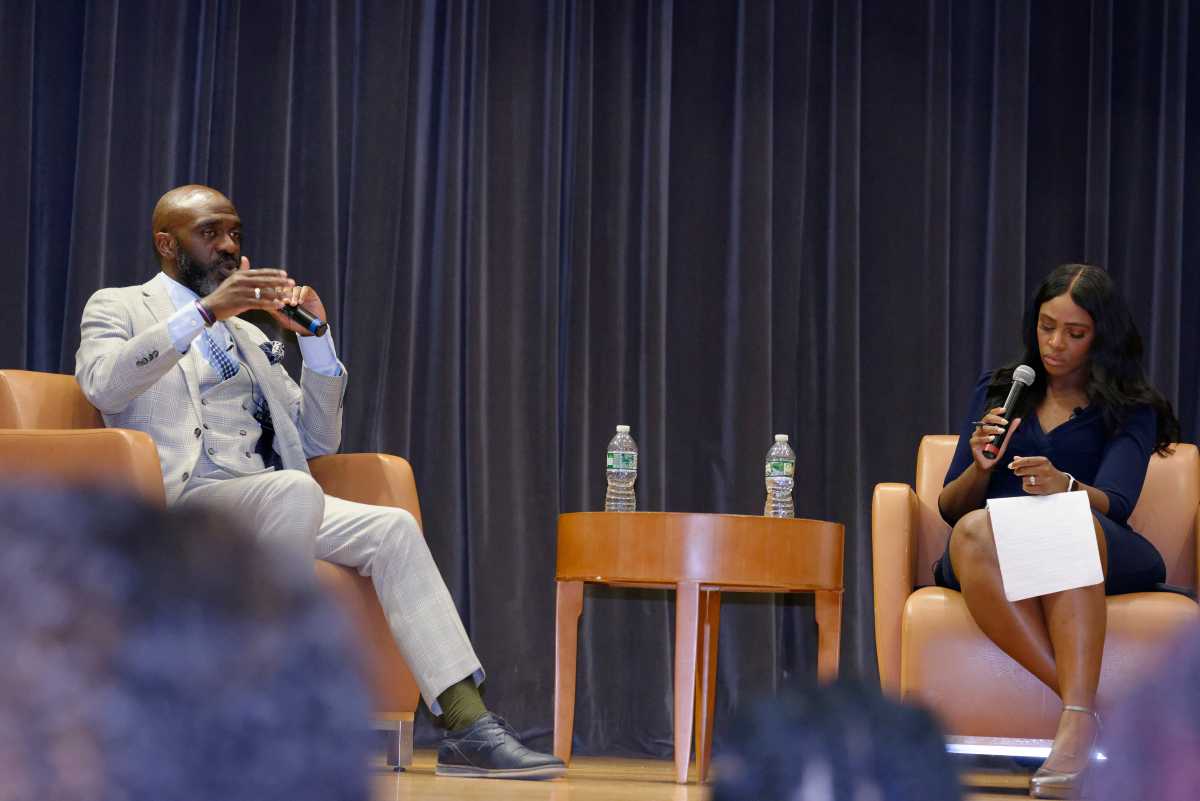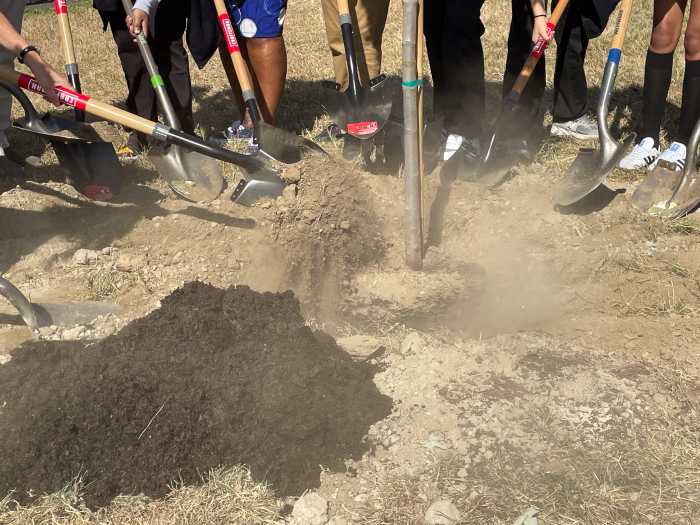“Homelessness is worse now than in the 1970s,” one passerby remarked as they looked upon an encampment in the East Village Monday.
A similar sentiment weighs on the hearts and minds of many New Yorkers as the city streets appear to host more and more rough sleepers and crude encampments with each passing day, the latest of which has appeared on 9th Street and Second Avenue.
Nestled within a small space between the wall of a vacant retail store and construction scaffolding, an individual has engineered a meager dwelling that cuts them off from the passing foot traffic inches away.
Hanging cloth from the support beams and stuffing couch cushions has established a modicum of privacy, while large wedges of cardboard are used to create an unhinged doorway propped up by a Citibike.
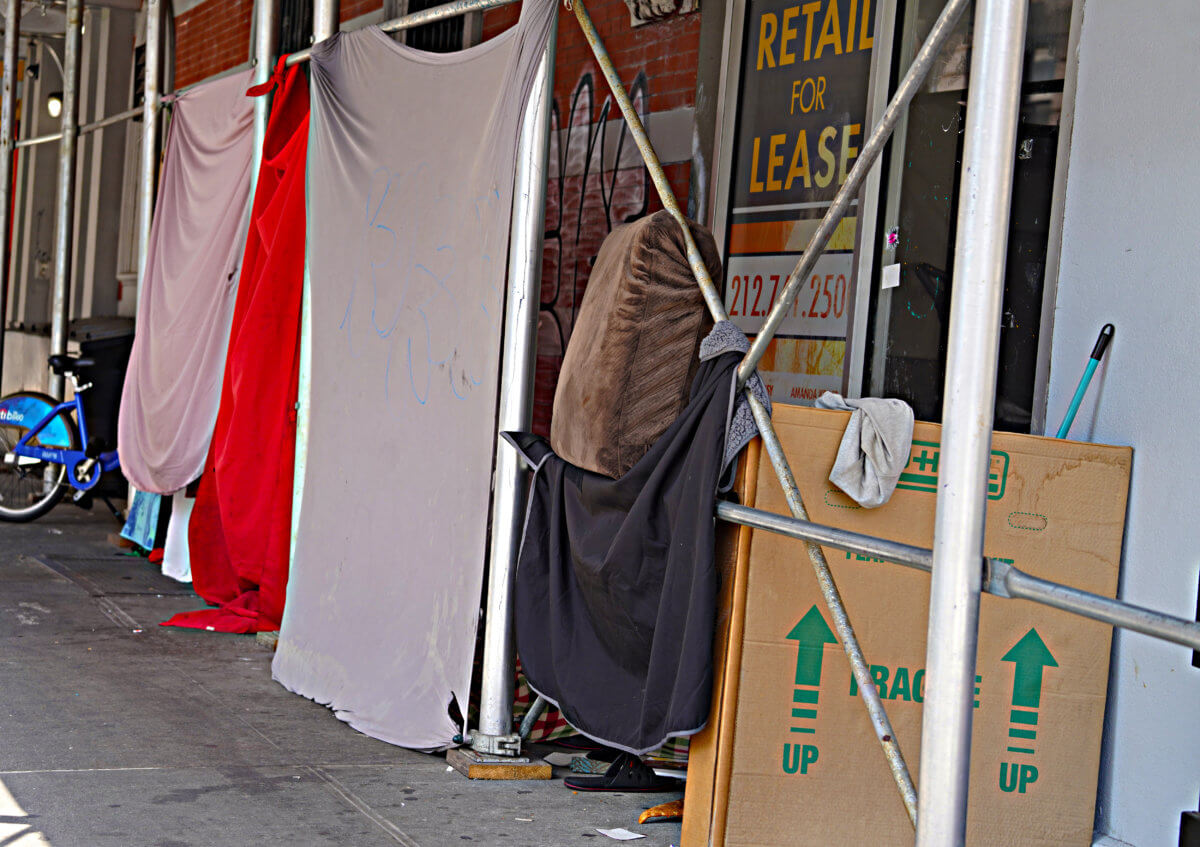
Inside, the claustrophobic living space has been made to resemble a tiny home. A broom leans on the brick, a carpet of pillows covers the callous sidewalk, and even a laundry basket harbors spilt clothing.
Encampments like these are nothing new and have only grown since the dawn of the COVID-19 pandemic and unfortunately could only further spread with the rent moratorium set to sunset on Aug. 31.
Moreover, the city’s beginning to relocate homeless individuals from hotels, where they had been sent during the pandemic to better protect them, back to more crowded congregate shelters.
However, according to Josh Goldfein, staff attorney at the Legal Aid Society, many don’t make it to the shelters and instead wind up back on the street.
“A shelter provider contacted the Legal Aid Society noting that when they started relocating people from hotels to shelters not everybody showed up at the shelters. We asked the city — the Department of Homeless Services—can you give us numbers of how many people left the hotels vs how many people arrived at the shelter? The Department of Homeless Services said, ‘We are not going to track that number.’ They don’t want to know the answer to that question,’” Goldfein told amNewYork Metro.
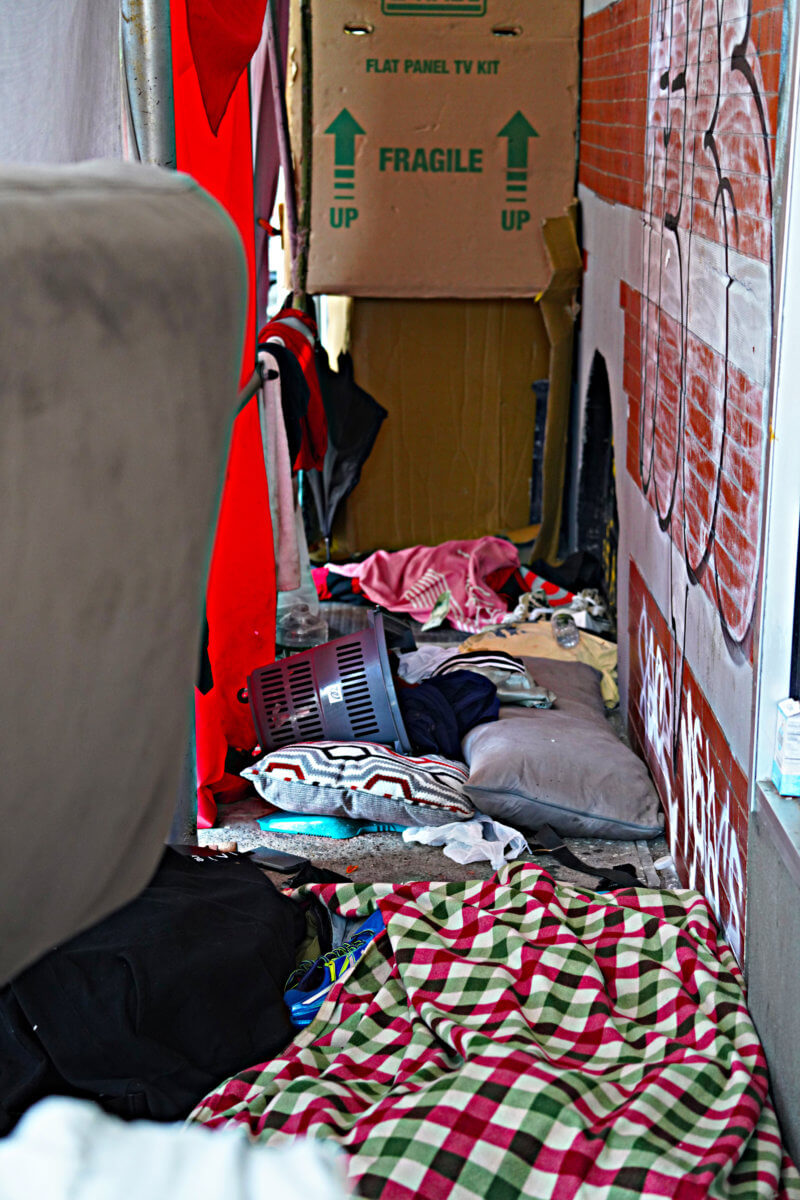
Perhaps the most telling factor of all regarding homelessness in new York City is how little pedestrians are fazed by the sight of the unhoused.
Whether it is a panhandler or a person neck deep in a sleeping bag on a public space, the perception of severe misfortune has become nothing more than a slight inconvenience, or just a part of the city’s background, to the couples strolling hand-in-hand or the shoppers touting grocery bags. The nonchalance threatens to make the homelessness crisis a permanent, forgotten fixture in New York’s landscape.
But it doesn’t have to be this way, according to Corinne Low, a homeless rights advocate at UWS Open Hearts, who said the answer to the homelessness crisis is rather simple.
“If the shelter system worked, you would not see people sleeping on the floor of Penn Station,” Low said. “It takes people who are homeless so long to accumulate the meager belongings that they have. The right thing to do is to go to those individuals and say, ‘What would you need to be able to come inside, what do you need the shelter to look like?’ And then build that.”
Low believes the city should adopt an approach that genuinely follows the best advice from New Yorkers, and serves the best interests of the unhoused.
“We know that safe havens work, when people are offered a stabilization bed in a hotel there is a 70% chance of staying versus when they are offered a bed in a traditional shelter, they have a 9% chance of staying, so make them an offer where people can say ‘I can stay there.’ Why are we making people offers that are worse than sleeping on the street?” Low added.
amNewYork Metro contacted the city’s Department of Social Services, and the Department of Homeless Services, for comment, and is awaiting their responses.
